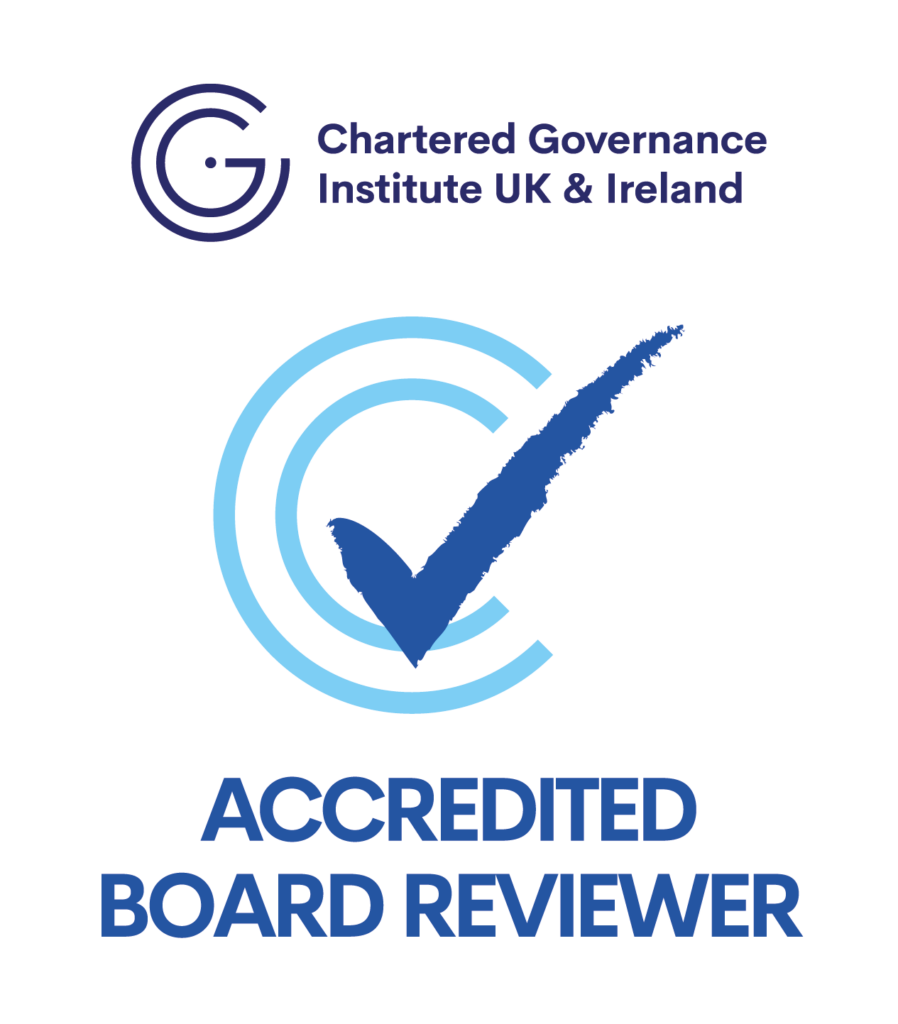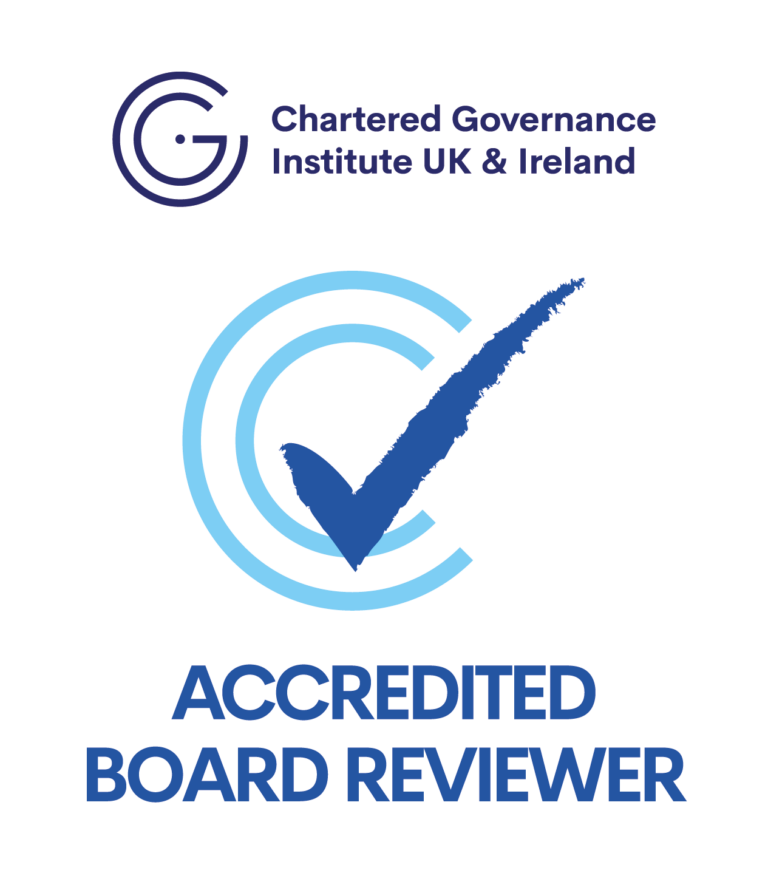Ever wondered if your board is truly steering your organisation toward success?
Discover the critical importance of board performance reviews and how they can transform your boardroom dynamics. Gain insights into the key focus areas of these reviews, common methods used and recommended frequency for conducting reviews.
Board Performance Reviews
What is a Board Performance Review?
A board performance review, also known as a board evaluation, is a structured process used to assess and examine the workings of a board and its members on its effectiveness and performance. This evaluation aims to ensure that the board is fulfilling its roles and responsibilities effectively, contributing to the organisation’s success, and adhering to best practices in corporate governance.
These reviews typically encompass various aspects of board activities, including governance practices, decision-making processes, strategic oversight, and the contributions of individual directors.
What Does a Board Performance Review Focus On?
Now that you know what a board performance review is and its benefits, you might be wondering, “What exactly does a board review focus on?” Well, that all depends on why you’re doing the review in the first place.
Is it to make sure the board is diverse enough and has the right skills to steer the ship? Or maybe the review is all about providing clarity in overseeing organisational performance, strategy, risk management, controls, and reporting? Whatever the reason, each focus area helps ensure your board is sailing smoothly and staying on course!
Here’s a detailed look at what is typically reviewed and the key focus areas:
1. Board Composition and Structure:
- Skills and Expertise: Evaluates if the board has the right blend of skills, knowledge, and experience to tackle the organisation’s strategic needs.
- Diversity: Assesses how diverse the board is in terms of gender, ethnicity, background, and thought, making sure there’s a wide range of perspectives.
- Roles and Responsibilities: Reviews how clear everyone’s roles and responsibilities are, ensuring tasks are well-distributed and authority is properly delegated.
2. Governance Practices:
- Compliance and Ethics: Ensures the board adheres to governance standards, ethical guidelines, and regulatory requirements.
- Policies and Procedures: Examines how effective the board’s policies, bylaws, and procedures are, including how well they are followed and updated.
3. Meeting Effectiveness:
- Agenda and Materials: Reviews the quality and timeliness of meeting agendas and supporting materials.
- Conduct and Participation: Assesses how meetings are run, including the level of engagement, participation, and preparedness of board members.
- Decision-Making Processes: Evaluates how effective the decision-making processes are and the quality of board discussions and deliberations.
4. Strategic Oversight:
- Goal Setting and Monitoring: Analyses how well the board sets strategic goals and tracks progress toward achieving them.
- Risk Management: Reviews the board’s role in identifying and managing organisational risks, including financial, operational, and reputational risks.
5. Board Dynamics and Culture:
- Interpersonal Relationships: Evaluates the quality of relationships and interactions among board members.
- Boardroom Culture: Assesses the overall culture of the boardroom, including the level of trust, respect, and openness to diverse opinions.
Follow the link to find out more on Board Dynamics and Culture in our Knowledge Hub
6. Individual Director Performance:
- Contribution and Engagement: Reviews the contributions of individual directors, including their engagement and active participation in board activities.
- Development and Training: Identifies areas for individual development and ongoing training to enhance the skills and knowledge of board members.
7. Board Committees:
- Committee Effectiveness: Evaluates how well board committees, such as audit, governance, and compensation committees, are performing.
- Charters and Responsibilities: Reviews the clarity and appropriateness of committee charters and whether they adhere to their defined responsibilities.
8. Stakeholder Communication and Relations:
- Transparency and Reporting: Assesses how effectively the board communicates with stakeholders, including shareholders, employees, and the public.
- Feedback Mechanisms: Reviews the systems in place for receiving and acting on stakeholder feedback.
Key Focus Areas:
- Alignment with Strategic Goals: Ensuring that the board’s activities and decisions are aligned with the organisation’s strategic objectives.
- Continuous Improvement: Identifying areas for improvement in governance practices, board processes, and individual performance.
- Risk Mitigation: Proactively addressing potential risks and challenges that could impact the organisation.
- Succession Planning: Planning for the future by identifying and developing potential leaders within the board.
Who Leads the Board Performance Review?
Many board performance reviews and assessments are handled internally, often led by the board chair or lead director with support from management. Sometimes, the nominating and governance committee takes the reins. Other times, senior management or a third-party facilitator steps in. But ideally, the process should be driven by board leadership. Committee assessments? Those are typically led by the respective committee chairs.
Some boards bring in external advisors to facilitate the review process. In fact, about 73% of UK companies use third-party facilitators for their board evaluation process. These external advisors, acting as neutral intermediaries, can create a more comfortable atmosphere that encourages openness and honesty among directors. However, it’s crucial that any external facilitator chosen has plenty of experience to ensure the process is effective and credible.
“About 73% of UK listed companies engage external facilitators to conduct their board evaluations. This trend is driven by the desire for greater objectivity, expertise, and credibility in the evaluation process”CGI UK & Ireland
Common Methods for Reviewing Board Performance
- Self-Assessments: Directors fill out questionnaires independently, evaluating the board's processes, effectiveness, and their own contributions. While this allows for introspection, there's a risk of inherent biases since directors are rating themselves.
- Peer Feedback: Directors assess each other’s performance via questionnaires or one-on-one interviews. This method provides valuable insights from peers but can be tricky, as some directors may be hesitant to give unfavourable feedback.
- Management Input: Senior executives provide their perspectives on working with the board through surveys or interviews. This method helps reduce self-assessment bias but might lead to defensive reactions from directors.
- External Facilitation: An independent governance expert conducts an in-depth review using questionnaires, interviews, focus groups, and direct observation of board meetings. This approach offers greater objectivity but requires a significant time commitment.
- Hybrid Model: This approach combines self-assessments, peer reviews, and periodic external facilitation over a 3–4-year cycle. It balances objectivity, self-reflection, and cost, offering a well-rounded evaluation process.
How Often to Initiate a Board Performance Review?
Just like a ship needs regular maintenance, boards need routine check-ups too! Regular board performance reviews are absolutely essential for keeping everything shipshape.
These reviews contribute to continuous improvement by fostering a culture of self-reflection and accountability. They provide a structured opportunity for boards to reassess their composition, dynamics, and practices, ensuring they stay aligned with the organisation’s goals and the ever-changing business landscape. Plus, these reviews can uncover potential risks and inefficiencies, allowing boards to tackle issues proactively and make well-informed decisions.
Recommended Frequency for Conducting Board Performance Reviews:
- Annual Assessments: Most experts recommend conducting a board performance review annually. This regularity helps keep the board’s effectiveness on track and ensures continuous improvement.
- Every Three Years: The UK Corporate Governance Code suggests that listed companies should engage an external facilitator at least once every three years for a more thorough evaluation (CGI UK & Ireland)
Factors Influencing the Timing and Frequency of Board Reviews:
- Organisational Changes: Major changes within the organisation, such as mergers, acquisitions, or significant shifts in strategy, might necessitate more frequent reviews.
- Regulatory Requirements: Compliance with industry regulations and governance codes can dictate the frequency of board evaluations.
- Board Turnover: High turnover rates among board members might require more regular assessments to ensure seamless integration and effectiveness.
Accredited Board Reviewer
Providing independent Board Performance Reviews for enhanced Board effectiveness.

Preparing for a Board Performance Review
Getting ready for a board review is like prepping your ship for an inspection!
- Set clear objectives by defining what you aim to achieve with the evaluation.
- Decide on the best approach and focus areas for your board’s context.
- Select participants carefully, involving directors, senior management, and possibly external facilitators.
- Plan the logistics by setting a timeline, developing questionnaires, scheduling interviews, and arranging for board observer access if needed.
- Provide guidance on feedback to ensure it's given and received constructively, fostering a positive and productive process.
- Analyse the results by synthesising key themes from the feedback and triangulating perspectives for a comprehensive view.
- Facilitate a discussion of the findings with the full board and management to encourage a collaborative approach to addressing issues.
- Develop clear action plans to improve board performance and integrate these into the board’s annual work plan and individual director development plans.
- Maintain transparency by disclosing the evaluation process and confirming its completion to stakeholders appropriately.
The chair plays a crucial leadership role throughout this process. They encourage constructive participation and ensure follow-through on development actions, keeping the board on course for continuous improvement!
Concluding Thoughts
In the ever-evolving world of business, keeping your board in top shape is no longer just a good idea—it’s a necessity! Regular board performance reviews act like a navigational compass, ensuring your board is on the right course and equipped to steer the organisation towards success. These evaluations don’t just highlight strengths and areas for improvement; they foster a culture of accountability and continuous development.
By committing to regular assessments, you are not only enhancing decision-making and governance practices but also building trust with stakeholders. This proactive approach showcases a dedication to excellence and responsible leadership, proving that your board is not just reactive but forward-thinking and dynamic.
So, don’t let your board drift aimlessly. Embrace the process, leverage the insights, and steer confidently into the future. Your organisation will thank you for it, and you’ll set a standard of governance that others will aspire to.
Here’s to smoother sailing and a more effective, accountable board! Stay tuned for our upcoming articles where we will dive deeper into the fundamentals of performance reviews and best practices and preparing for a board evaluation.
Ready to take your board’s performance to the next level?
Feel free to get in touch to find out how we can help empower your board to perform at its best.
- If you are interested in learning more about Genius Boards' board performance review services.
- If you are interested to engage an external board evaluator accredited by CGI UK and Ireland for your next board review.
- If you would like more information on our review process and approaches.
- If you have some questions related to board dynamics culture, composition and structure, or any other topics.





























